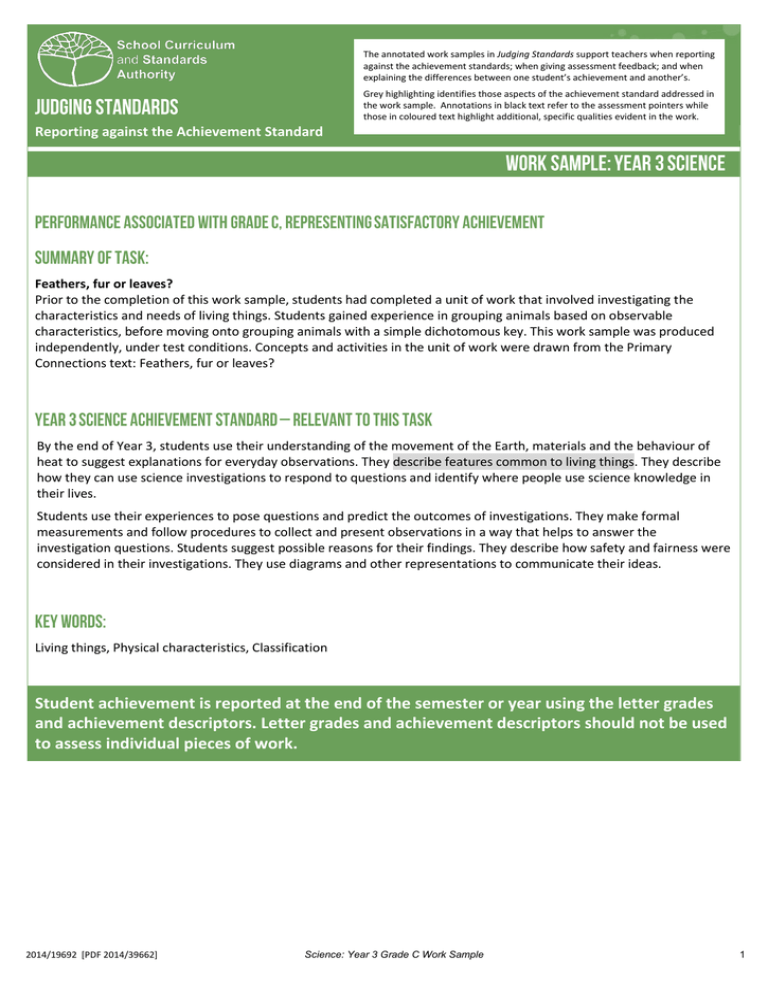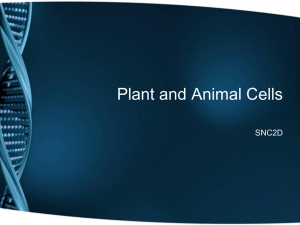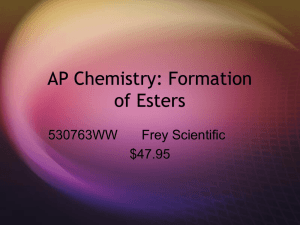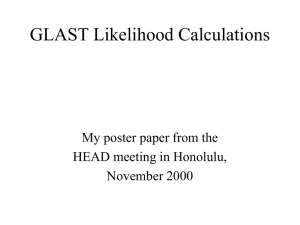1012.0 KB - K-10 Outline - School Curriculum and Standards Authority
advertisement

The annotated work samples in Judging Standards support teachers when reporting against the achievement standards; when giving assessment feedback; and when explaining the differences between one student’s achievement and another’s. Grey highlighting identifies those aspects of the achievement standard addressed in the work sample. Annotations in black text refer to the assessment pointers while those in coloured text highlight additional, specific qualities evident in the work. Reporting against the Achievement Standard Feathers, fur or leaves? Prior to the completion of this work sample, students had completed a unit of work that involved investigating the characteristics and needs of living things. Students gained experience in grouping animals based on observable characteristics, before moving onto grouping animals with a simple dichotomous key. This work sample was produced independently, under test conditions. Concepts and activities in the unit of work were drawn from the Primary Connections text: Feathers, fur or leaves? By the end of Year 3, students use their understanding of the movement of the Earth, materials and the behaviour of heat to suggest explanations for everyday observations. They describe features common to living things. They describe how they can use science investigations to respond to questions and identify where people use science knowledge in their lives. Students use their experiences to pose questions and predict the outcomes of investigations. They make formal measurements and follow procedures to collect and present observations in a way that helps to answer the investigation questions. Students suggest possible reasons for their findings. They describe how safety and fairness were considered in their investigations. They use diagrams and other representations to communicate their ideas. Living things, Physical characteristics, Classification Student achievement is reported at the end of the semester or year using the letter grades and achievement descriptors. Letter grades and achievement descriptors should not be used to assess individual pieces of work. 2014/19692 [PDF 2014/39662] Science: Year 3 Grade C Work Sample 1 Groups living things according to easily observable features, e.g. correctly groups animals according to whether or not they can fly. 2014/19692 [PDF 2014/39662] Science: Year 3 Grade C Work Sample 2 Identifies characteristics of a living thing, e.g. identifies growth, reproduction, movement and the need for water. Correctly classifies items as living or non-living, e.g. offers ‘people’, ‘bugs’, ‘plants’ and ‘fish’ as examples of living things, and ‘toys’, ‘blanket’, ‘books’ and ‘pencil case’ as non-living things. Communicates ideas and information using a few methods, e.g. creates a simple diagram of a butterfly with some labels. 2014/19692 Science: Year 3 Grade C Work Sample 3 Reproduced with the permission of the Australian Academy of Science. Reproduction of this branching key does not imply endorsement by the Australian Academy of Science of the SCSA Judging Standards materials. Groups living things according to easily observable features, e.g. uses a dichotomous key to classify animals. Makes a conceptual classification error, labelling a squid as a fish, instead of a mollusc. Also makes a simpler error, labelling a scorpion as a fish. For copyright reasons, original images used in the activity cannot be reproduced in the online version of this document, and have been replaced by the School Curriculum and Standards Authority with comparable images. 2014/19692 Science: Year 3 Grade C Work Sample 4 Groups living things according to easily observable features, but with a number of errors, e.g. uses some correct animal groups, such as ‘fish’, ‘insects’ and ‘birds’; however, sits these three categories alongside a final category of ‘living’ rather than within it. Includes a banana and a dragonfly in this group. (Shows aspects of a D standard.) For copyright reasons, original images used in the activity cannot be reproduced in the online version of this document, and have been replaced by the School Curriculum and Standards Authority with comparable images. Completes a table, identifying characteristics of particular living things, with two errors. 2014/19692 Science: Year 3 Grade C Work Sample 5 Image acknowledgements [Free clipart of squid]. (n.d.). Retrieved August, 2014, from www.clipartpal.com/clipart_pd/animal/squid/squid_10265.html Pearson Scott Foresman. (2009). Lizard (PSF) [Image]. Retrieved from http://commons.wikimedia.org/wiki/File:Monitor_Lizard_(PSF).png Bureau of Entomology. (1930). [Image of Australian cockroach]. In R.E. Snodgrass, Insects: Their ways and means of living (Smithsonian Scientific Series; vol. 5). New York: Smithsonian Institution, fig. 49, p. 78. Retrieved August, 2014, from http://commons.wikimedia.org/wiki/File:Barata-australiana.JPG Pearson Scott Foresman. (2008). Bee – queen (PSF) [Image]. Retrieved from http://commons.wikimedia.org/wiki/File:Bee_-_queen_(PSF).png Pearson Scott Foresman. (2008). Stingray (PSF) [Image]. Retrieved from http://commons.wikimedia.org/wiki/File:Stingray_(PSF).png Pearson Scott Foresman. (2007). Alligator (PSF) [Image]. Retrieved from http://commons.wikimedia.org/wiki/File:Alligator_(PSF).jpg Pearson Scott Foresman. (2009). Tiger 3 [Image]. Retrieved from http://commons.wikimedia.org/wiki/File:Tiger_3_(PSF).png Mühel, G. (1890). Ring-tailed lemur (Lemur catta). In A. Brehm, Brehms Tierleben. Leipzig: Bibliographisches Institut, p. 284. Retrieved August, 2014, from http://commons.wikimedia.org/wiki/File:Lemur_catta__Brehms.png Pearson Scott Foresman. (2008). Black bear (PSF) [Image]. Retrieved from http://commons.wikimedia.org/wiki/File:Black_bear_(PSF).png Pearson Scott Foresman. (2009). Dragonfly (PSF) [Image]. Retrieved from http://commons.wikimedia.org/wiki/File:Dragonfly_(PSF).png Pearson Scott Foresman. (2007). Swordfish (PSF) [Image]. Retrieved from http://commons.wikimedia.org/wiki/File:Swordfish_(PSF).png Pearson Scott Foresman. (2009). Wolf (PSF) [Image]. Retrieved from http://commons.wikimedia.org/wiki/File:Wolf_(PSF).png 2014/19692 Science: Year 3 Grade C Work Sample 6



